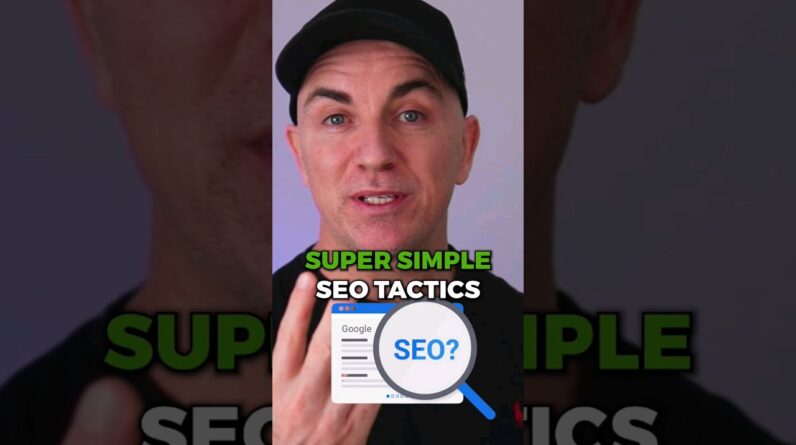30-second summary:
- Old point and shoot methods of SEO are unsustainable.
- Agile marketers are paving the path forward combining technology and talent.
- Machine learning is helping search marketers remove repetitive and mundane tasks.
- COVID-19 has accelerated digital transformation that was underway well before.
- Combining business intelligence and search intelligence is a must.
- Jim Yu, Founder and CEO of BrightEdge discusses the essentials of being an agile marketer.
“Seeking marketing and search optimization expert with demonstrated abilities to understand search ranking process, lead strategically and collaborate with other teams and departments, bring forth new processes to streamline tasks and create efficiencies, drive brand storytelling strategy across channels…” – Being a digital marketer on the job market, you would see a mix of descriptions like this and the ones below which hint on the search for agile marketers.
“Must have experience in HTML, CSS, PHP, and web standards… own and execute digital strategy including content ideation and creation…”
“Perform A/B testing, own the marketing database, carry out full SEO audits… contribute to thought leadership by authoring blog posts and speaking at events…”
It’s not your imagination, clients and recruiters alike are in fact searching for digital hybrids—for equal parts technical expertise, strategic insight, and creativity all wrapped up in one neat package.
Once upon a time, these seemingly conflicting qualities existed inside of very different roles. Those days are long over. SEO is no longer a tactic and a siloed team, but an integral and foundational part of a holistic digital marketing strategy. Search insights reveal consumer behaviors and trends critical to marketing’s performance and thanks to recent developments in AI, we can monitor and make sense of more of this data than ever before.
Today, if you want to succeed as a leader in the marketing space, you must be agile in its most literal sense: able to move quickly and easily. Across teams and departments, between campaigns and tools, through various channels and market segments—the Agile Marketer has the analytical know-how and emotional intelligence to navigate and lead others through the sprawling digital marketing landscape with ease.
Here are two specific areas in which modern marketers can focus to build agility and value:
A. The technology and insights at your disposal
Monitoring, evaluating, and activating search insights at any sort of scale has proven challenging for SEOs still trying to cobble a workflow together out of disparate tools. Last year, BrightEdge research showed that the average search marketer relies on four to six SEO tools and data sources to execute their strategy.
These tools are responsive by nature, as they tend not to “speak” to one another. Data must be manipulated, reformatted, and evaluated before any recommendations can be deployed. Using point solutions leaves SEOs scrambling to answer consumers’ needs as they were expressed days, weeks, or months ago. To measure the impact of a search update, formulate a new strategy, and only then be able to respond.
Both search technology and consumer behavior have outpaced this approach by far. Data silos and point solutions limit the reach and efficacy of your every digital marketing effort, hindering your ability to drive traffic, leads, and revenue. Companies that make their decisions based on data are 58% more likely to beat their revenue goals, but the quality of that data is imperative.
There’s just no point anymore in creating a massive data warehouse jammed with prospective use cases. The path to operationalizing that data is too long, cumbersome, and far away from its actual utility in marketing.
If you haven’t already, it’s time to graduate beyond this time-consuming and labor-intensive approach. Find a platform that gathers data from all relevant sources, automates repetitive tasks, employs AI and deep learning to make meaningful recommendations, automates to assist, and keeps pace with changes in search all within a single interface.
Intelligent automation and this level enable agile marketers to get in front of consumer demand—to meet site visitors in their moments of need with personalized content that is relevant, timely, and speaks directly to their unique behavioral characteristics. Your tools and technology need to empower your marketing team, not frustrate them, or create more work. They must free up time for more creative, impactful pursuits.
B. The way you put these insights and tools to work
Building agility into your marketing strategy isn’t a matter of picking up a few new skills or switching tools. It’s a mindset, a culture that transforms your marketing strategy from start to finish, from SEO to CMO.
According to a recent survey from Aprimo, 95% of marketers who have agile on their mind plan to adopt the approach within the next 12 months. The same respondents told us that 74% of Agile marketers are satisfied with their team’s performance and that Agile teams feel more capable of handling fast-paced work than their peers.
Top tips to help you and your team become Agile marketers
1. Take a page from our friends in software development
Familiarize yourself with the core tenets of Agile as it’s been used successfully by tech and development teams for years. The Agile Manifesto of Software Development, the Agile bible produced by 17 people in 2001, is a great starting point.
This mindset was founded on four key values:
- Individuals and interactions over processes and tools
- Working software over comprehensive documentation
- Customer collaboration over contract negotiation
- Responding to change over following a plan
Agile began as a method of developing software but has evolved into an ideology applicable to all manner of digitally transformative projects such as the Agile Marketing Manifesto.
The four key values when applied specifically to marketing become seven, and they are:
- Validated learning over opinions and conventions
- Customer-focused collaboration over silos and hierarchy
- Adaptive and iterative campaigns over Big-Bang campaigns
- The process of customer discovery over static prediction
- Flexible vs. rigid planning
- Responding to change over following a plan
- Many small experiments over a few large bets
2. Decide what you want to achieve with your Agile approach
Understand the benefits of Agile and decide how each will apply in your own organization.
Accelerating time to market, enhancing one’s ability to manage changing priorities, increasing productivity, and improving alignment between IT and business objectives are among the top reasons firms adopt Agile methods. But what do you expect it to do for yours—and how will you accurately measure outcomes?
3. Understand the characteristics that make agile team members
As I’ve said, agile is a mindset. As you’re putting your teams in place and making new hires, keep your eye on building that culture you want to achieve. Marketers who exhibit qualities of collaboration, openness, creative thinking, and resilience are good choices. Rigidity, total ownership of processes and ideas, unwillingness to change once a plan is in place, and protectionism are all red flags.
Being an agile marketer doesn’t mean you stop planning. It means you build the ability to change and pivot quickly into your plans. At the leadership level, agility requires that you have a big picture view of the tools, data, and people in play but more importantly that you possess the emotional intelligence to understand the motivations and needs of each stakeholder. An agile marketer can “read the room” quickly and on an ongoing basis to inform incremental decisions and make adjustments as the plan is implemented.
Constantly learning. Constantly testing. The Coronavirus was a stark reminder of just how quickly things can change. Consumer behaviors, service delivery models, market segments, and entire organizational models had to change overnight. Companies have been forced to rethink entire product and service lines, in some cases shifting into new verticals.
Agile Marketers are best positioned to succeed in whatever comes next, having built the solid foundation of skills, technology, and talent it takes to constantly process and activate new information.
Is that you?
Jim Yu is the founder and CEO of BrightEdge, the leading enterprise SEO and content performance platform.
The post The agile marketer: Building agility with technology and talent appeared first on Search Engine Watch.







